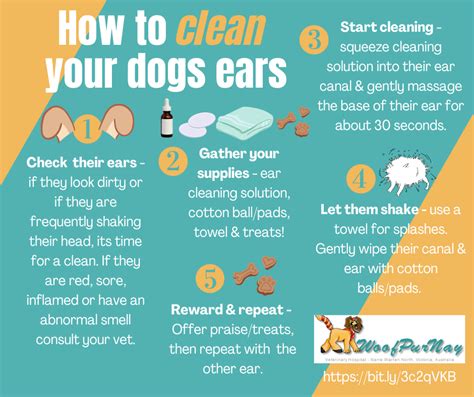Introduction
As responsible pet owners, ensuring the well-being and hygiene of our furry companions is paramount. One crucial aspect of this care involves the meticulous cleaning and care of their ears and paws. Tuft ears and paws are particularly prone to dirt and debris accumulation, which can lead to infections and discomfort if not addressed promptly. This in-depth guide will provide comprehensive insights into the proper techniques for ear and paw cleaning, addressing concerns, and embracing innovative solutions for optimal pet care.

Tuft Ear Cleaning
Tuft ears, commonly found in breeds such as the Cocker Spaniel, Poodle, and Shih Tzu, require special attention due to their long, flowing hair that can trap debris and moisture. If not thoroughly cleaned, this can lead to ear infections and discomfort.
Materials:
- Ear cleaning solution (veterinarian-approved)
- Cotton balls
- Gauze pads
- Towels
Steps:
- Gather materials: Ensure you have all necessary materials within reach before beginning the cleaning process.
- Restrain your pet: Gently hold your pet’s head, being mindful of their comfort and safety.
- Apply solution: Tilt your pet’s head to the side and carefully apply the ear cleaning solution into the ear canal. Massage the base of the ear gently to distribute the solution.
- Remove debris: Use cotton balls or gauze pads to gently wipe away any visible dirt or debris from the ear canal. Avoid inserting the cotton balls or gauze too deeply into the ear.
- Dry ears: Use a clean towel to thoroughly pat the inside and outside of the ears dry.
Frequency:
The frequency of ear cleaning for tuft ears depends on factors such as:
- Breed
- Activity level
- Environment
Generally, it is recommended to clean tuft ears once or twice a month.
Paw Cleaning and Care
Paws are equally important for maintaining pet hygiene and preventing infections. Regular paw cleaning removes dirt, debris, and potential allergens that can accumulate on the pads and between the toes.
Materials:
- Mild soap
- Warm water
- Towels
- Paw wipes (optional)
Steps:
- Restraint: Gently hold your pet’s paw, keeping it secure but not applying too much pressure.
- Clean pads: Using a mild soap and warm water, gently wash the paw pads, removing all dirt and debris.
- Clean between toes: Use a soft cloth or paw wipes to gently wipe between the toes, paying attention to any accumulation of dirt or debris.
- Dry paws: Use a clean towel to thoroughly dry the paws, ensuring there is no moisture left between the toes.
- Inspect for injuries: While cleaning your pet’s paws, take the opportunity to inspect for any cuts, wounds, or other injuries.
Frequency:
The frequency of paw cleaning depends on:
- Activity level
- Environment
- Health condition
As a general rule, it is advisable to clean paws daily if your pet spends a lot of time outdoors.
Concerns and Considerations
- When to seek veterinary attention: If your pet exhibits any of the following symptoms, consult a veterinarian immediately:
- Persistent ear odor
- Ear discharge (especially if bloody or foul-smelling)
- Head shaking or scratching
- Paw redness, swelling, or pain
- Regular checkups: Ear and paw examinations should be part of your pet’s regular veterinary checkups. This ensures early detection and prompt treatment of any potential issues.
Innovative Solutions for Tuft and Paw Care
Advancements in pet care have led to the development of innovative solutions for tuft and paw care:
- Ear cleaning wipes: Pre-moistened ear cleaning wipes are convenient and effective for removing dirt and debris from tuft ears.
- Paw balms: Paw balms can help protect and moisturize paw pads, especially during harsh weather conditions.
- Ear dryers: Ear dryers can be used to thoroughly dry tuft ears after cleaning, reducing the risk of moisture retention and infection.
Conclusion
Tuft ear and paw cleaning and care are essential aspects of pet hygiene and well-being. By following the proper techniques outlined in this guide, you can effectively remove dirt, debris, and potential allergens that can lead to infections and discomfort. Regular checkups with your veterinarian and embracing innovative solutions will further enhance the health and happiness of your furry companion. Remember to pay attention to your pet’s behavior and consult a veterinarian if you observe any concerns.





















